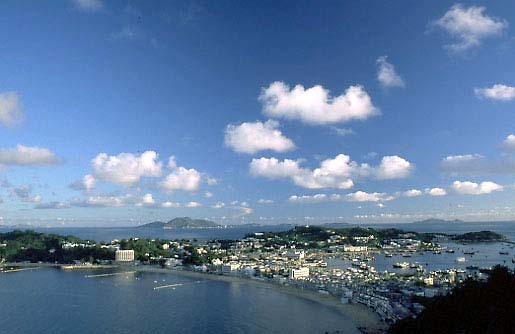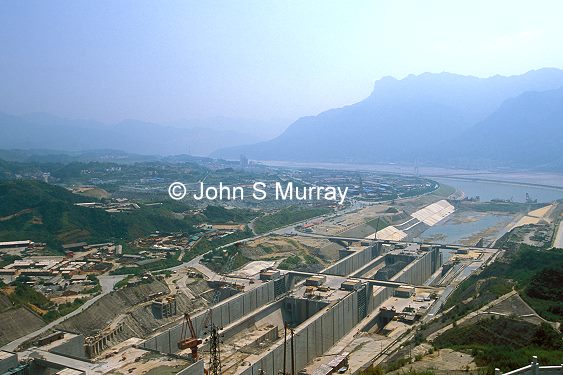|
This Webpage Title:
China - About
China - Hong Kong - Macau
China , (The People's Republic of China), is situated in eastern Asia, bounded by the Pacific in the east.
For Hong Kong information - use the Hong Kong link pages and for Macau use the Macau link page. 
China covers an area of almost 9.6 million square kilometres and is the most populous country on earth having more than one billion people and it is the third largest country in the world, next to Canada and Russia.

The bordering countries include Mongolia, Kazakhstan, India, Nepal, Burma, Vietnam and Korea.
The People's Republic is led by Chinese Communist Party and governed by the State Council.
The main language spoken is the Mandarin dialect of Chinese but there are more than 150 languages and dialects spoken throughout the country.
In China tThere are 6,536 islands larger than 500 square meters, the largest is Taiwan, with a total area of about 36,000 square kilometers, and the second, Hainan. The South China Sea Islands are the southernmost island group of China.
China today includes Hong Kong (until 1997 leased to the British and Macau, leased to the Portugese).
China's provinces are: Anhui | Fujian | Gansu | Guangdong | Guizhou | Hainan | Hebei | Heilongjiang | Henan | Hubei | Hunan | Jiangsu | Jiangxi | Jilin | Liaoning | Qinghai | Shaanxi | Shandong | Shanxi | Sichuan | Yunan | Zhejiang.
China's Climate
Is mainly in the northern temperate zone under the influence of monsoons.
From September and October to March and April next year monsoonal winds blow from Siberia and the Mongolia Plateau into China and decrease in force as it goes southward, causing dry and cold winter in the country and a temperature difference of 40 degree centigrade between the north and south.
The temperature in China in the winter is 5 to 18 degree centigrade lower than that in other countries on the same latitude in winter.
The monsoon blows into China from the ocean in summer, bringing with them warm and wet currents, thus rain.
The annual rainfall varies greatly from region to region; it is as high as 1,500 millimeters along the southeastern coast. Decreasing landward, it is less than 50 millimeters in northwest China
History
China, one of the four oldest civilizations in the world, has a written history of 4,000 years and boasts rich cultural relics and historical sites.
It is the inventor of compass, paper-making, gunpowder and printing.
The Great Wall, Grand Canal and Karez irrigation system are three great ancient engineering projects built 2,000 years ago. Now they are the symbols of the rich culture of the Chinese nation.
China has gone over a long history of primitive society, slavery society, feudal society and semi-feudal semi-colonial society and the present socialist society. Chinese Dynasties and Chinese Historic Relics.

Family Names
The three most popular Chinese family names are: LI, WANG and ZHANG.
Rivers
China has 50,000 rivers each covering a catchment area of more than 100 square kilometers, and 1,500 of them cover a catchment area exceeding 1,000 square kilometers.
Most of them flow from west to east to empty into the Pacific Ocean . Main rivers include the Yangtze (Changjiang), Yellow (Huanghe), Heilong, Pearl , Liaohe, Haihe, Qiangtang and Lancang.
The Yangtze of 6,300 kilometers is the longest river in China. The second longest Yellow River is 5,464 kilometers. The Grand Canal from Hangzhou to Beijing is a great water project in ancient China. It is of 1,794 kilometers, making it the longest canal in the world.

Religions
China is a multi-religious country. Buddhism, Taoism, Islam, Catholicism and Protestantism.
Money
Chinese Money is called Renminbi (RMB) (means "People's Currency"). The popular unit of RMB is Yuan.

|